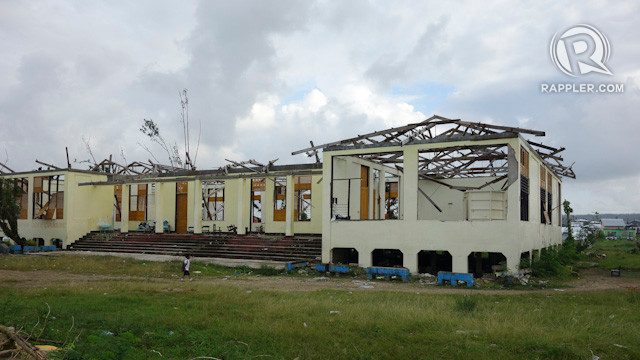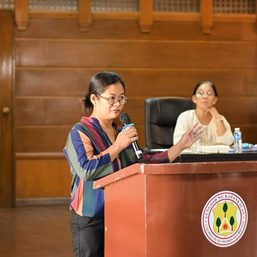SUMMARY
This is AI generated summarization, which may have errors. For context, always refer to the full article.

MANILA, Philippines – The House of Representatives approved on Wednesday, August 9, the country’s New Philippine Building Act, in a bid to adapt to climate change hazards.
House Bill No. 8500, a consolidation of 10 other proposals, sets minimum standards for the regulation of “location, planning, design, construction, occupancy, maintenance, and demolition” of all public and private buildings and structures.
The bill repeals the 46-year-old National Building Code of the Philippines (NBCP) or Presidential Decree No. 1096 (PD 1096) enacted in February 1977 by former president and dictator Ferdinand Marcos Sr.
1-PACMAN Representative Michael Romero and Bulacan 6th District Representative Salvador Pleyto Sr. – the first House lawmakers to file such proposals in the 19th Congress – said it’s high time to come up with the new legislation to ensure resilient and functionally sound buildings.
“Largely due to climate change, our country is now frequently confronted with multiple hazards such as storms, fire, flooding, landslide, and even earthquake. Our law and regulations on building construction need to be updated to safeguard life and property against these hazards,” Romero said.
“This law (PD 1096) has to be repealed. We have been using this obsolete law,” added Pleyto, a former Department of Public Works and Highways (DPWH) undersecretary. “We have to make our buildings withstand a magnitude 8 earthquake.”
What’s in the bill?
Under HB 8500, structures over 15 years old must undergo mandatory assessment of stability against hazards, unlike PD 1096 which does not cover structures built prior to its implementation.
It also institutionalizes the creation of evacuation buildings nationwide, as many parts of the country still use schools during disasters, disrupting classes in the process.
Local government units are still allowed to pass their own building ordinances, as long as they are consistent with the provisions of the new building code.
The bill names the DPWH secretary as National Building Official (NBO) who is the chief implementer of the measure.
A Building Regulations Standards Council (BRSC) within the DPWH shall also be formed to assist the NBO in implementing the bill.
A building classification system assesses structures according to fire resistance, use or occupancy, and identified track permitting process. The bill classifies 12 subgroups of occupancy:
- Assembly: gathers 50 or more persons for any purpose (entertainment, worship, deliberation, etc.)
- Business: holds less than 50 persons for business transactions (general offices, internet shops, beauty parlors, etc.)
- Disaster Risk Reduction and Management (DRRM): caters to DRRM operations including training centers, temporary evacuation centers, permanent centers for refuge
- Educational: gathers six or more persons for instruction purposes (kindergartens, nurseries, colleges, etc.)
- Factory and Industrial: venues of industrial operations (laboratories, laundries, power plants, etc.)
- Agricultural and Bio-systems: produces, stores, transports agricultural and bio-system products (farmhouses, greenhouses, slaughterhouses)
- Institutional: houses occupants incapable of self-restraint/preservation (jails, homes for the aged, etc.)
- Mercantile: displays sales or merchandise (showrooms, stores, restaurants, etc.)
- Residential: residential accommodations
- Storage: shelters goods and merchandise
- Utilities and Miscellaneous: classifies occupancies not belonging to any of the subgroups
- High-Hazard: stores hazardous materials (flammable, combustible, infectious)
The bill enumerates three tracks streamlining permitting processes:
- Simple (Track 1): Ordinary residential houses and small buildings follow a shorter and simplified permitting process and reference standards.
- Regular (Track 2): Structures not classified as Track 1 or Track 3 follows a regular permitting process.
- Special (Track 3): Structures of distinguished size or purpose such as buildings of more than 40,000 square meters, facilities under Groups D, G, I, or underwater structures follow peer review requirements of structural stability.
Pending in the Senate
The consolidated measure has 60 principal authors, including House public works chairperson Romeo Momo Sr., who defended the bill in the plenary.
This is the first time a bill of its kind passed the House, but it still needs the Senate’s approval before the measure is transmitted to the President’s desk for his signature.
Multiple bills amending or repealing PD 1096 are pending in the upper chamber, filed by senators Francis Escudero, Bong Go, Bong Revilla, and Francis Tolentino. – Rachel Ivy Reyes/Rappler.com
Rachel Ivy Reyes is the news editor of Outcrop, the official student paper of the University of the Philippines Baguio. She currently volunteers for Rappler.
Add a comment
How does this make you feel?





There are no comments yet. Add your comment to start the conversation.